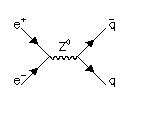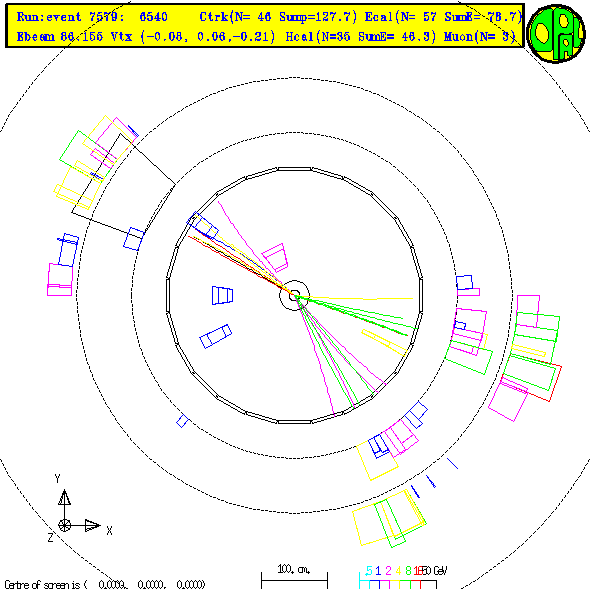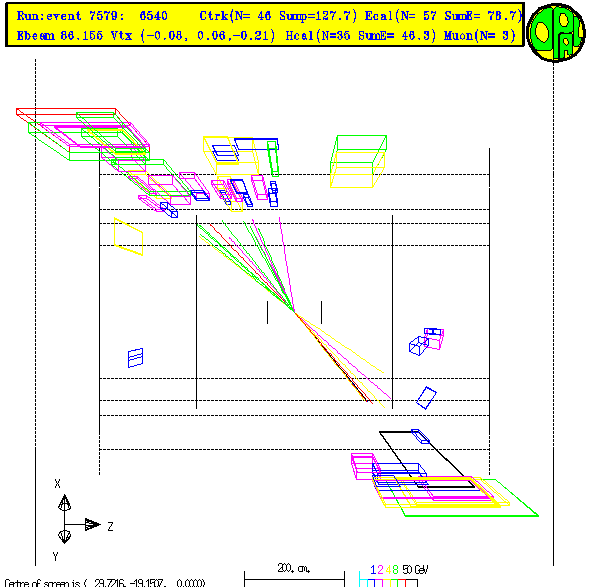 events:
events:
Remember the diagram we used to represent
 events:
events:

A high energy gluon can be radiated from either the quark or the antiquark as shown in the following diagram:
 .
.
Notice this diagram looks quite similar to that for the radiation of a photon from a quark, which we looked at in the previous section. Unlike a photon we do not observe the gluon directly in our detector. Instead the gluon produces a shower (or "jet") of particles, just like a quark, and it is this jet of particles we observe in our detector.
The presence of a gluon in addition to a quark-antiquark pair produces an event containing three jets: Here is an example event:
 Event Number 1
Event Number 1

If two high energy gluons are radiated then we may see events with
four jets:
 .
.
Notice that such events can start to look very much like the
 events we looked at in an earlier section!
Sometimes it is impossible to say if a particular event belongs to one
type or the other.
events we looked at in an earlier section!
Sometimes it is impossible to say if a particular event belongs to one
type or the other.
 Next take a look at some example "four fermion"
events.
Next take a look at some example "four fermion"
events.
 Back to general section on "How to Identify Some Slightly More Complicated
Types of Event".
Back to general section on "How to Identify Some Slightly More Complicated
Types of Event".